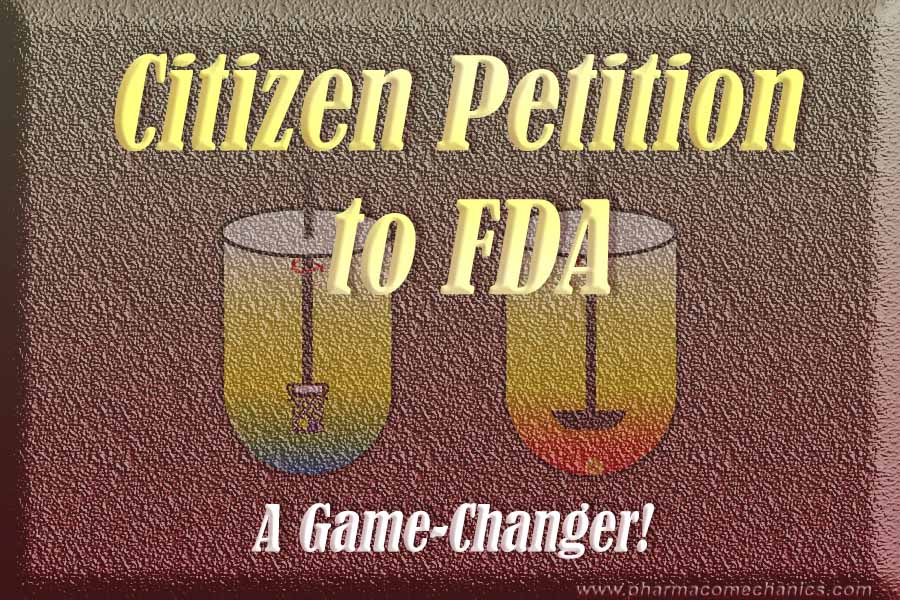Possible interpretation of the FDA response to my Citizen Petition – a positive and encouraging development
I submitted a Citizen Petition to the FDA, on October 1, 2018, requesting withdrawal of its guidance documents and related recommendations concerning assessments of drug dissolution characteristics of pharmaceutical products such as tablet and capsule (link).
The FDA responded, on April 1, 2019 on an interim basis, stating that FDA has been unable to reach a decision on the petition because it raises complex issues requiring extensive review and analysis by Agency officials (see here) or @ the FDA site (link).
My view is that a decision has already been made in support of the Petition (i.e. withdrawal of the guidance documents); however, FDA requires time for its implementation. My reasoning is as follow:
The Petition in fact has two parts; Part 1 (Rationale) – requiring the use of currently recommended dissolution testers (USP Paddle/Basket) which have never been validated and/or qualified for the intended purposes i.e. relevance to assessment of products dissolution in humans. Further, if a (blinded) product sample is given to an analyst, he/she would not be able to determine its dissolution characteristics, which makes the test scientifically invalid and practically useless. Part 2 – (Guidance withdrawal) considering the lack of validity of the apparatuses and testing as described in Part 1, the guidance documents become null and void as these depend on the use of non-validated apparatuses, hence their withdrawal was requested.
To dismiss the Petition, all FDA had to do was to provide: an evidence (link, reference and/or laboratory document) demonstrating that apparatuses are validated/qualified for the intended use. This should have required practically no time. Secondly, if an example was not available already for the analysis of a blinded sample, then all it would have taken the Agency couple of days (maximum) to run an experiment to establish dissolution characteristics of the product. As the testers are not qualified or validated, obviously, testing of a (blinded) sample is not possible. Thus, Petition could not be dismissed.
Therefore, in my view, FDA is considering withdrawing the guidance documents. This should not require extended time period as well. However, considering complexity of the issue (as noted in the response as well) such as meeting procedural formalities, along with associated adjustments, may require extra time which is understandable. This may easily take many months.
If my interpretation is correct, then it becomes important to inform the scientific and manufacturing communities promptly about the situation so that they should be cautious and avoid using the non-validated dissolution testers and methods. In addition, it will provide an opportunity to explore other options for addressing the issues, perhaps submitting ideas to the authorities as well for moving forward – noting that at present no one is determining, or can determine, valid or useful dissolution results of any product (1, 2).
I look forward to a prompt resolution of the issue by removing the non-validated/non-qualified (thus non-GMP) dissolution testers and tests, along with the associated guidance documents, from the regulatory system leading to simpler, efficient and science-based approaches for the assessment and monitoring quality of the pharmaceutical products.

